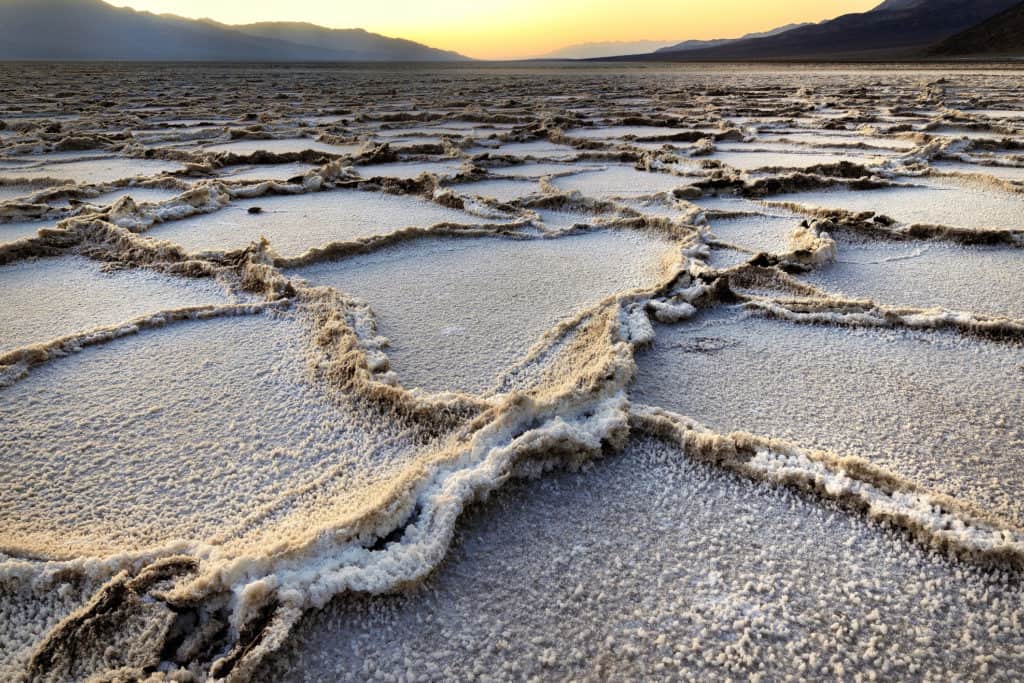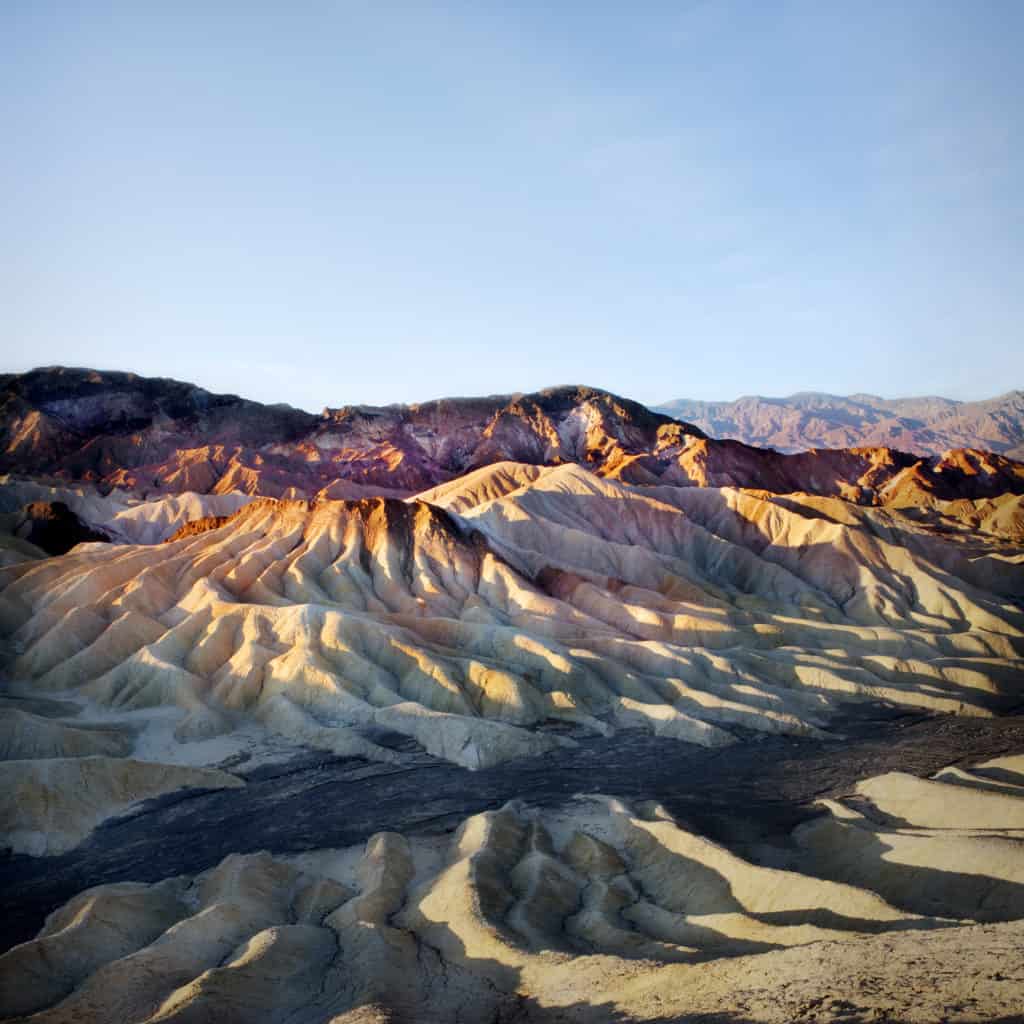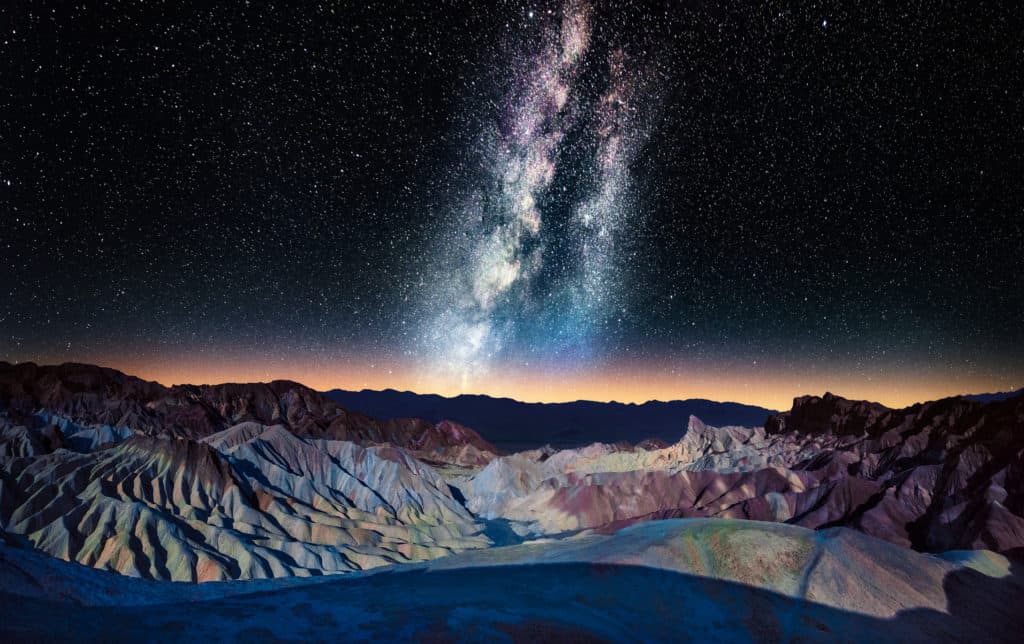Some spots that you’d want to avoid at all costs during summer become amazing places to visit during the winter. One such place is below-sea-level Death Valley National Park, located on the border between California and Nevada—the hottest, driest and lowest National Park in the nation. On Sunday, August 16, 2020, this three-million-acre land of extremes recorded its hottest temperature ever—a scorching 130 degrees, which some weather experts say set a global record. Given the park’s extreme temperatures, visitors in the summer usually have to tour the park by car.
Winter, however, is a whole other story. The winter months are the ideal time to explore the park’s strikingly varied topography—from desert dunes and rugged mountains to eerie salt flats. Like many desert areas, the park is chilly in the morning and at night, often dropping into the upper 30s. But during the day, the weather warms up to perfect hiking temps, ranging from the mid-60s to the low 70s. The mild weather combined with clear, sunny skies mean that during the winter the park turns into a kind of paradise inviting exploration both by car and foot. Trails leading through canyons give visitors a glimpse of stunning geological formations and the wintertime light couldn’t be more perfect for taking pictures of the dramatic landscape. On top of all that, Death Valley National Park is a Gold Tier International Dark Sky Park and boasts stargazing experiences that are among the best in the world.
5 Can’t-Miss Sights in Death Valley National Park
The weeks between Thanksgiving and Christmas—the least crowded period in the park—are a particularly good time to visit. These days, entrance fee payments are contactless and take place at automated outdoor fee stations located near the park entrances, visitor center and viewpoints. You can also purchase a pass online at Recreation.gov.
There’s no end to what you can see in this park, but the five spots listed below promise to expose you to a broad spectrum of spectacular geological diversity.
Father Crowley Vista and Rainbow Canyon
Located just inside the west entrance to the park, Father Crowley Vista offers jaw-dropping dawn views of Rainbow Canyon—a brilliantly colorful striped canyon shaped by volcanic activity. It’s not just the captivating landscape that draws visitors to this spot. Rainbow Canyon has another claim to fame—military test flights take place in the area and folks come to photograph the planes. Aviation enthusiasts have given the canyon a nickname that reflects the training activity: “Star Wars Canyon.”
Badwater Basin

At 282 feet, Badwater Basin is the lowest spot in North America and the valley landscape that the park’s name refers to. It’s composed of salt flats and, given its basin form, it collects water in winter that reflects the adjacent Amargosa and Panamint mountain ranges, making for stunning photo-ops. Here, you can take a ¼-mile hike to the expansive polygon salt formations that the park is known for. Walking the trail, you’ll feel as if you’re on another planet, in a landscape with no beginning or end. Speaking of another planet: Viewing the night sky from these salt flats is a one-of-a-kind experience — just imagine what your night shots will look like with those flats in the foreground!
Artist’s Palette Drive
Artist’s Palette Drive is a one-way, nine-mile drive off Highway 190 that cuts through brilliantly colorful, mineral-rich peaks. Think of it as a geologic rainbow that you can also hike on a 4.5-mile loop. Who knew there could be this much color in a desert setting? It’s best to venture out during the afternoon when the light conditions add a dramatic effect to the landscape. You won’t believe your eyes—the hues really do resemble a painter’s palette. And if you happen to be a “Star Wars” fan, you might recognize some of the views here—various scenes in “Star Wars: A New Hope” were filmed in the area.
Mesquite Flat Sand Dunes
The towering sand heaps at Mesquite Flat Sand Dunes form the largest dune field in the park. Come here and you’ll be able to boast that you saw three different dune shapes: crescent, linear and star. You might also spot some wildlife—the mesquite trees provide a protective habitat for a variety of creatures including the kit fox, desert hare, kangaroo rabbit, mice and lizards. The terrific terrain is enough to satisfy any traveler, but the sky provides bragging rights, too. Stargazing doesn’t get much better than what you’ll experience on these dunes at night—the views are unobstructed and in winter, the light pollution from highway headlights is minimal.
Zabriskie Point

Zabriskie Point is the most famous viewpoint in the park. It’s great at any time of the day but come at sunrise and sunset and you’ll be blown away. The viewpoint overlooks sculpted, creamy gold and brown-hued badlands composed mostly of Furnace Creek Formation mudstones. To see more than the vistas the viewpoint offers and hike through winding canyons, take the trail that starts from the point around Badlands Loop. Connector trails can take you to other great spots, too such as Golden Canyon, Gower Gulch and Red Cathedral.
Winter Camping in Death Valley National Park

While group campgrounds are presently closed due to COVID-19, 762 campsites (limited to no more than 8 people and two vehicles) are open at the following campgrounds: Furnace Creek, Texas Springs, Sunset, Stovepipe Wells, Emigrant, Mesquite Spring, Saline, Eureka, Homestake, Wildrose, Thorndike and Mahogany. Dispersed camping is available where permitted.
It’s a good idea to make an advanced reservation for the Furnace Creek Campground, which is the only site that offers reservations in winter (Oct. 15-April 15); the others are first come, first served and campground fee payments are made at the automated, self-help kiosks with a credit or debit card. Check this National Park Services site page for more information about camping in Death Valley National Park.
Any camping sojourn in Death Valley National Park is sure to leave you with magical memories of a sparkling sky, gleaming golden slopes and poetic canyons.
